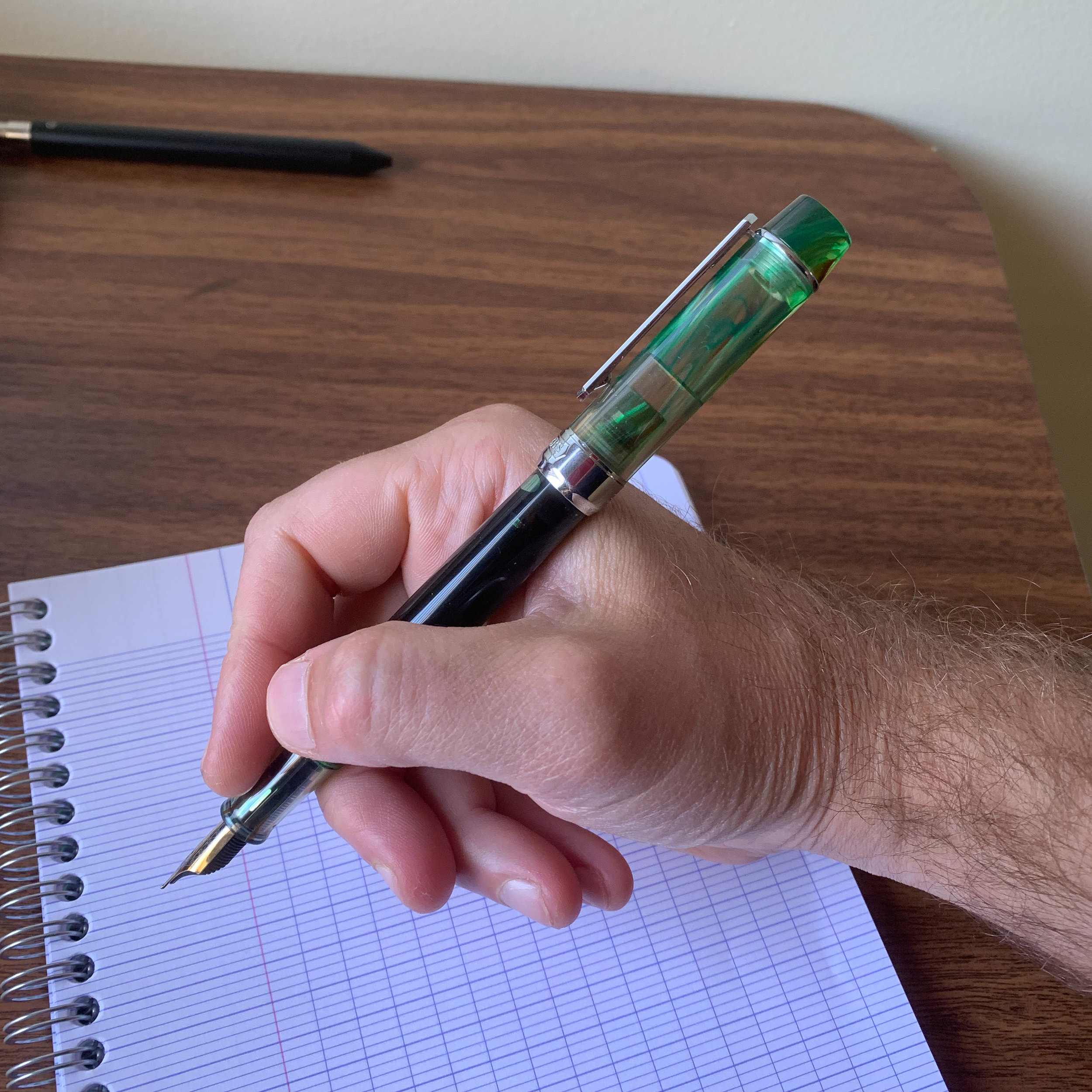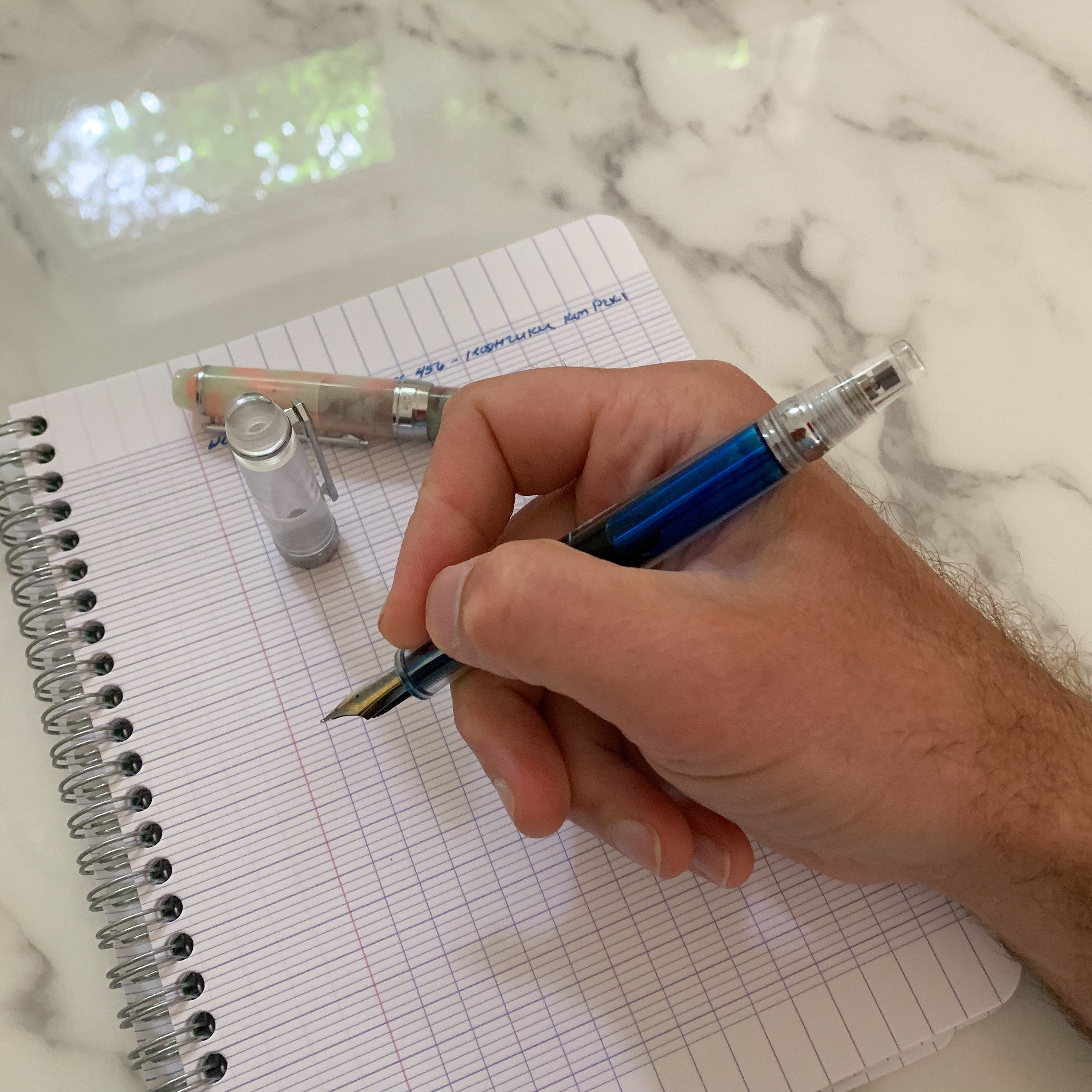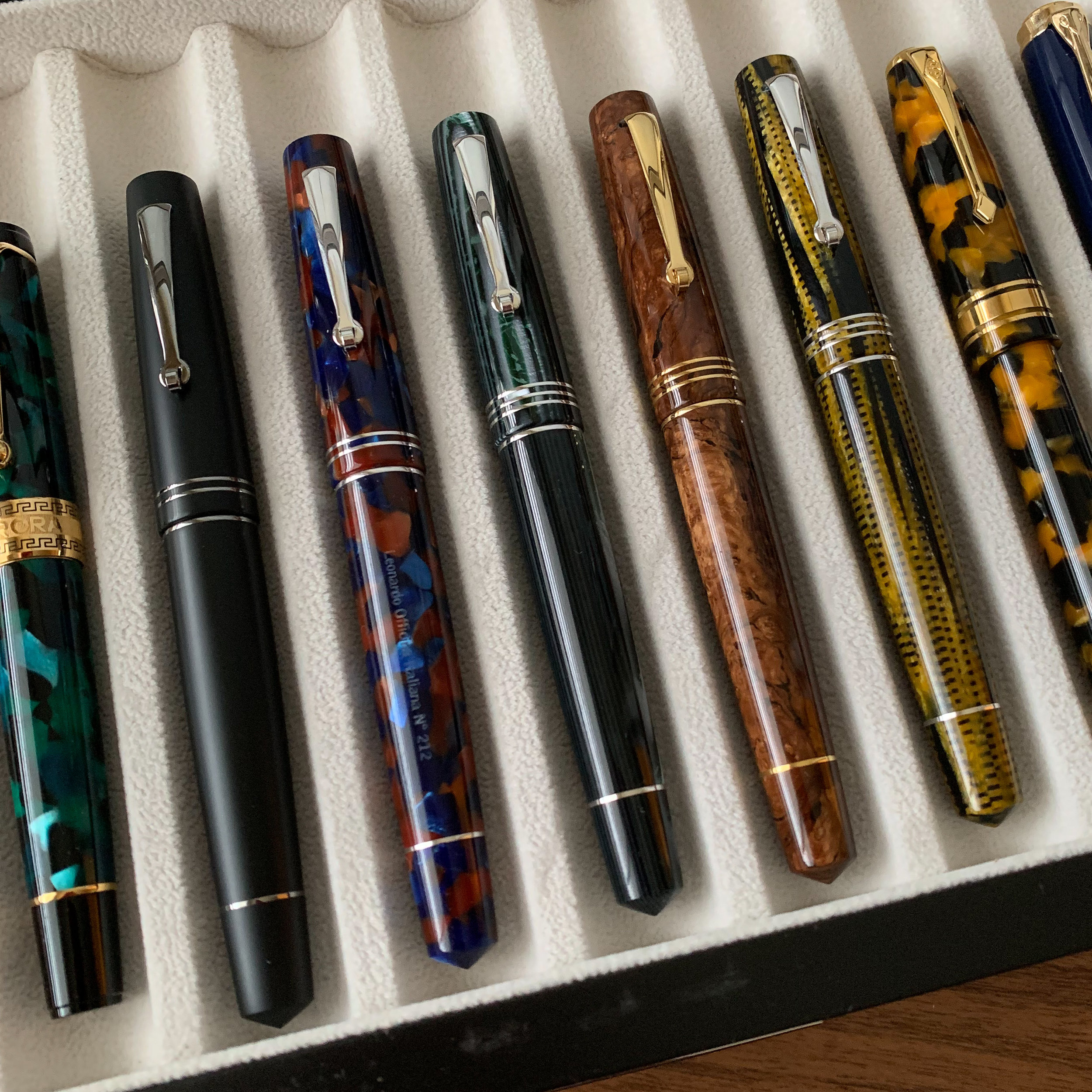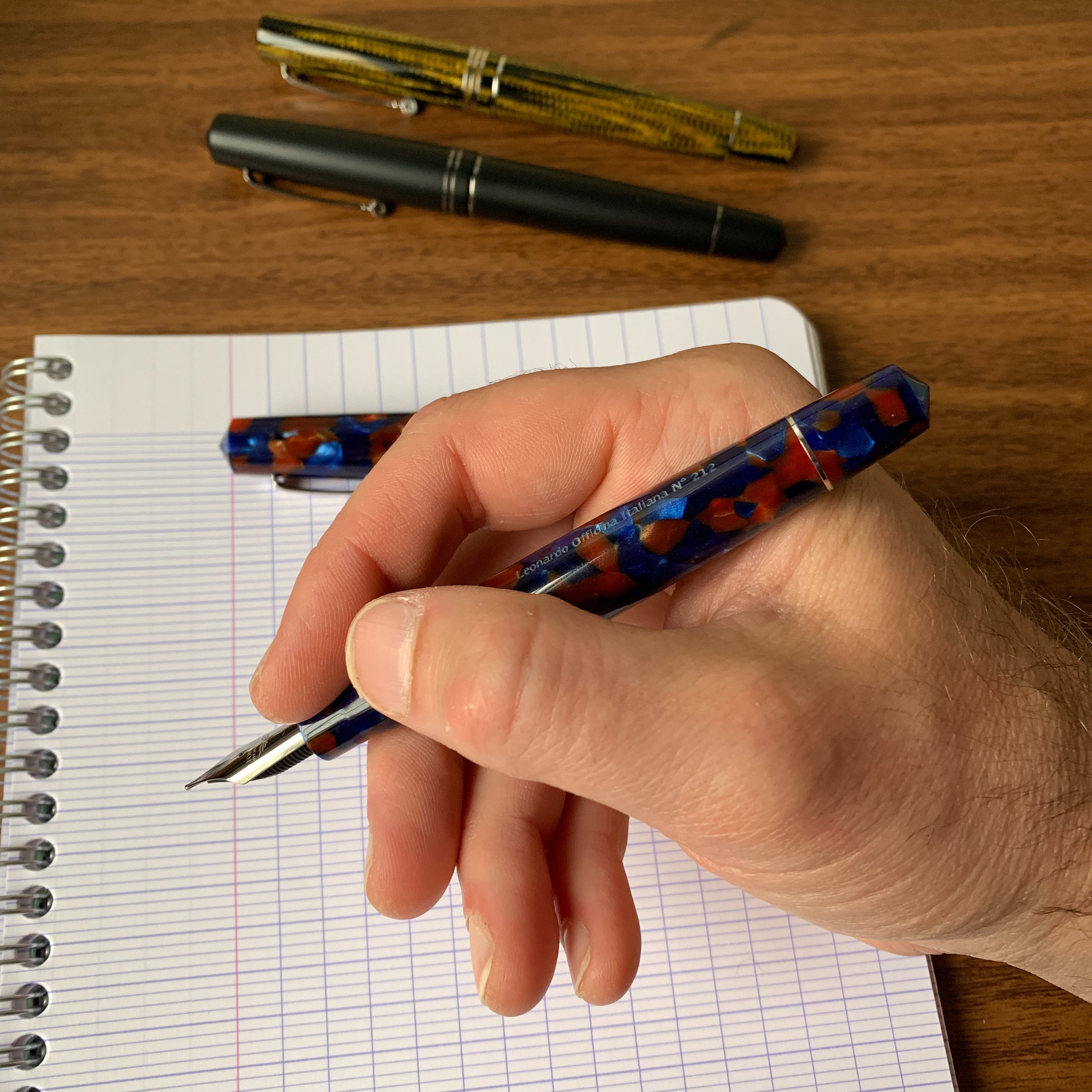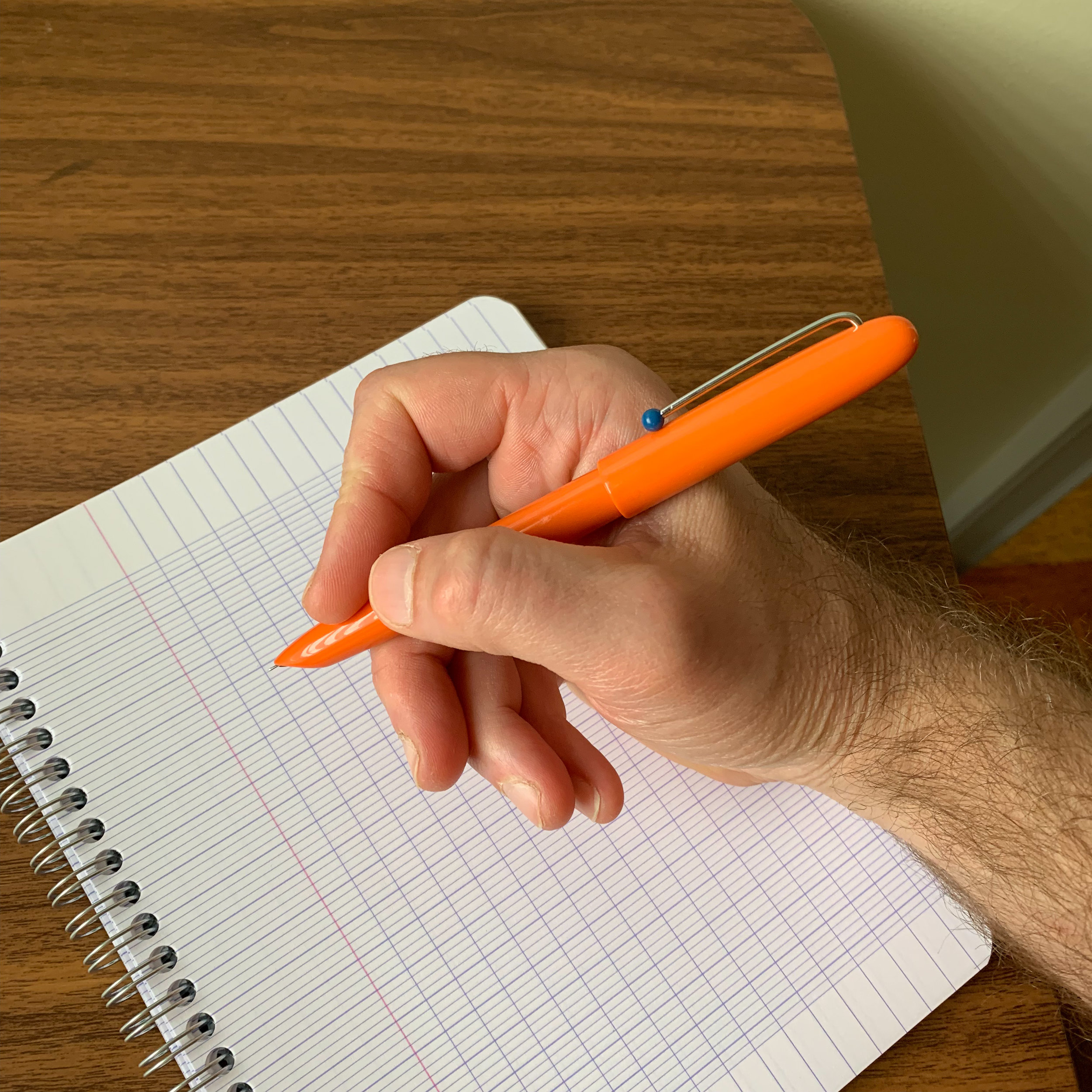One pen that receives a lot of press these days is the Conid Bulkfiller, which packs a nearly obscene level of engineering technology into a very expensive semi-custom fountain pen. Pricing on the Conids range from roughly $350 to nearly $1000, depending on the exchange rate, specific model, and options chosen. What most people love about these pens is their ink capacity - using a syringe-filling system that Conid calls the “bulkfiller,” you can fill the barrel to near capacity, something that is almost impossible with a piston or vacuum-filler.
But what if you love the idea of a pen with ginormous ink capacity but don’t have (or merely don’t want to spend) the coin on a Conid? You may not get the flawless engineering and streamlined looks of the Conid, but the PenBBS 355 offers a somewhat similar experience at a small fraction of the price.
Yep, that barrel is 100% full of ink. Sailor Rikyu-Cha to be precise. That’s a lot of writing.
Admittedly, this pen makes me nervous. I’ve owned a Bulkfiller Minimalistica in the past, and even that pen, with its extremely well-designed and well-built filling system, made me a bit uneasy when filling the pen and moving that much ink. How a syringe-filler mechanism works is a bit difficult to explain - essentially it uses a rod and piston to draw ink into the barrel, like a syringe, with the pen filling on the upstroke, and when the rod is fully extended you unscrew it to disengage from the piston and slide it back into the barrel. There are a lot of moving parts, and Chris does a great job showing how to fill this pen in one of his “Pen Talk” YouTube videos (the filling demonstration starts at 12:51). Overall, I didn’t have much trouble with the PenBBS 355, though I did find it somewhat tricky to disengage the rod from the piston after filling the pen, and a few drops of ink came out of the nib when I slid the rod back into the barrel. At the end of the day, the filling mechanism on the 355 is cool, but I probably prefer the “simplicity” of relatively no-fuss piston fillers and vacuum fillers.
I held the pen against the light to get a shot of the translucent green-swirl acrylic. It’s difficult to see the detail when the pen is full.
The acrylic on this particular pen was referred to in the listing as “Aurora Polaris" (presumably intended to be a reference to the Aurora Borealis). I would best describe this as a clear acrylic with streaks of green, brown, and white, with a heavy emphasis on green. It’s a beautiful material that underscores the staggering level of variety PenBBS offers. I currently have this pen inked with Sailor Rikyu-Cha, but in the future I think I might choose a brighter option as the Rikyu-Cha is pretty dark and hides the swirls on the transparent barrel.
The nib is the same as on the PenBBS 456. If I had to choose, I would say that the nibs on the 456 wrote smoother out of the box, but after a quick alignment of the nib tines the 355 was just as good, with this particular nib even providing slight architect-like line variation. In terms of comfort, the 355 feels good in the hand, but at the end of the day I again prefer the PenBBS 456, which has better balance and postability.
You can post the PenBBS 355, but it’s long. You’ll also note that there are no metal threads, which some might prefer but I miss because they front-weight the pen and, in my opinion, give better balance and a feeling of more control over the nib. I use this pen with the blind cap slightly open, to ensure a steady flow of ink from the reservoir to the nib.
Takeaways and Where to Buy
Though the PenBBS 456 is still my preference, the PenBBS 355 is also a great option, especially if you’re looking to purchase an inexpensive “ink tank.” Seriously, this thing drained nearly half the ink in my Pineider traveling ink pot when I filled it. My main concern here is the complexity of the mechanism and its durability over time. Given the number of moving parts in this sort of filling system, I’m interested to see whether it still works well a year or two from now.
As with most PenBBS pens, you can purchase directly from PenBBS via their Etsy store, or you can purchase from various eBay sellers, which is where I picked up the “Aurora Polaris” acrylic version here. Pricing on the PenBBS 355 currently ranges from $30-60, depending on the material and location of the Seller. The best pricing (albeit with a very limited selection) can be found in the PenBBS Etsy Store. The Company also recently released what appears to be a slimmer version of the 355 (the PenBBS 352) at around the $25 price point. (Correction: the 352 looks similar but does not have the same filling system - it apparently is a cartridge-converter pen. Apologies for any confusion.)
Disclaimer: I purchased the pen featured in this review with my own funds, for my own use.

